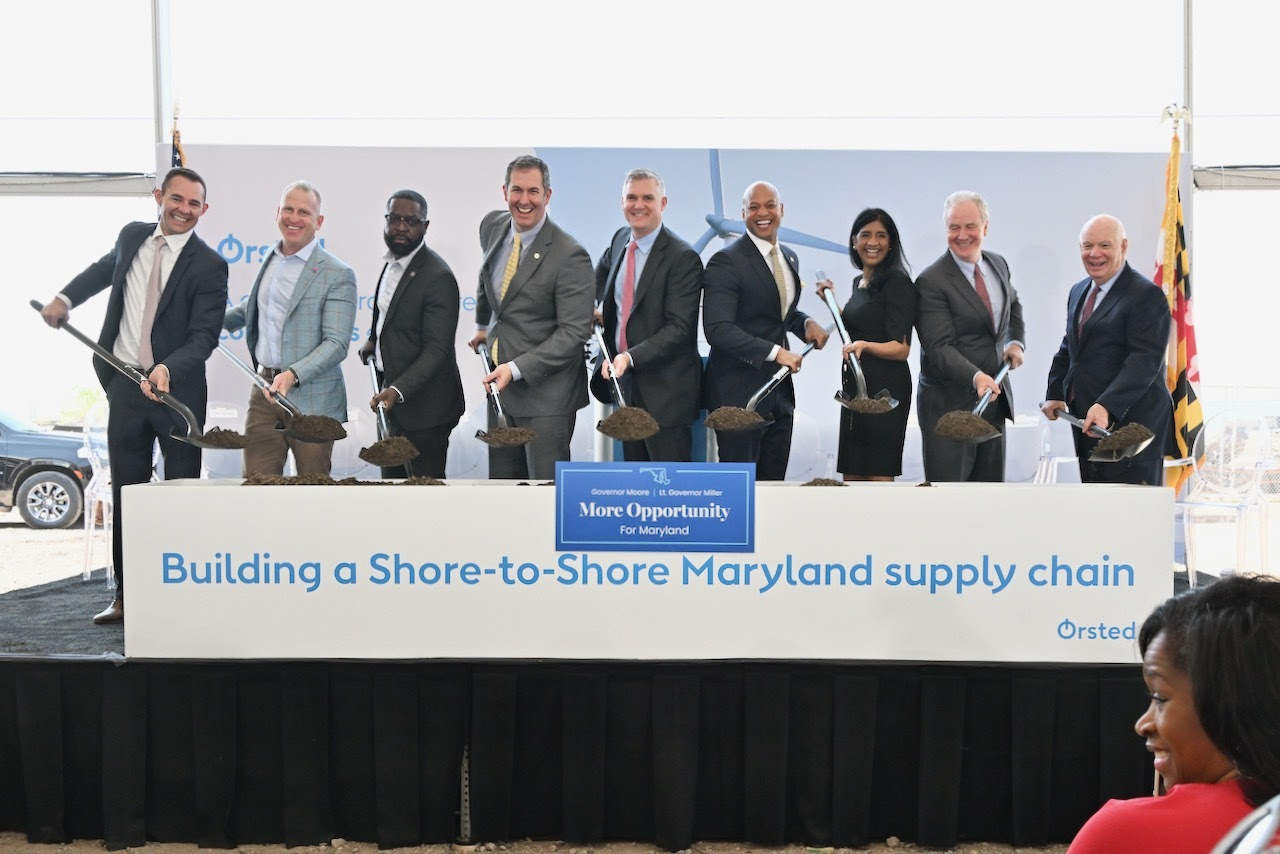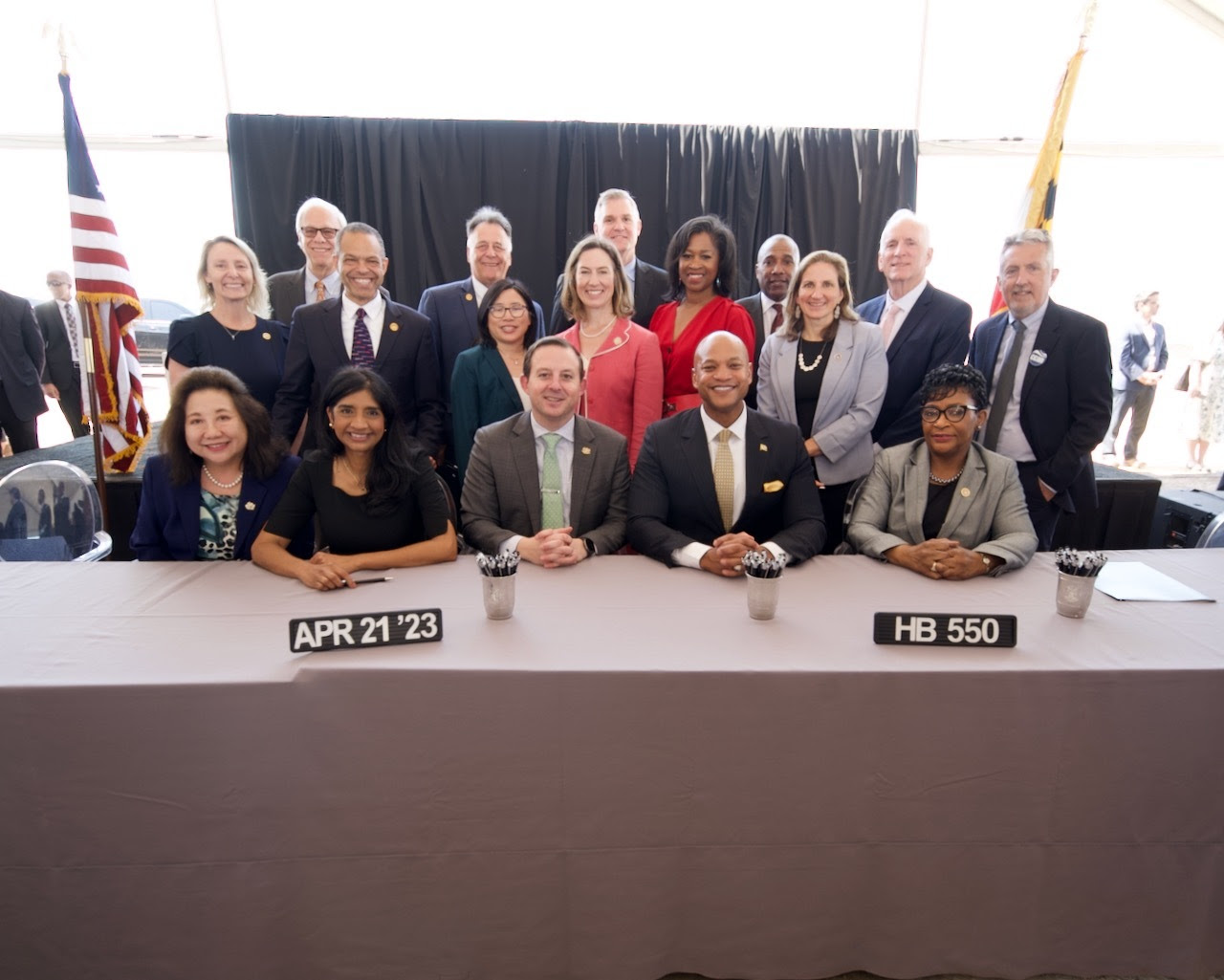Gov. Moore signs legislation to codify Maryland’s new 8.5 gigawatt offshore wind goal, increase electric vehicles in the state, and provide rebates to businesses purchasing electric vehicles
SPARROWS POINT, MD — Governor Wes Moore continued his ‘More Opportunity Tour’ today with a stop highlighting the progress at the Tradepoint Atlantic facility in Sparrows Point with Ørsted and signing several major environment bills geared toward further solidifying Maryland’s clean energy future.

“Because of the work happening today at Tradepoint Atlantic, Maryland is on track to become the offshore wind capital of America; it’s happening through this partnership with Ørsted, which is going to capture enough wind to power 300,000 homes, create 125 good-paying union jobs, and build a cleaner and greener world,” said Gov. Moore. “Today I’ve signed legislation to quadruple Maryland’s offshore wind energy goals, reduce greenhouse gas emission in our state, and to provide rebates to businesses that purchase electric vehicles. Together we will build on the great work of our partners at Tradepoint Atlantic, Ørsted, and U.S. Wind to build the clean energy future we want to see in Maryland.”
“The clean energy revolution isn’t on the horizon — it’s here now,” said Lt. Gov. Miller. “Maryland isn’t letting this opportunity, and the thousands of jobs that come with it, pass us by. With the legislation we’re enacting today and our partnerships with Ørsted, we’re setting the trajectory for the clean energy movement right here in Maryland.”
The Tradepoint Atlantic facility in Edgemere creates thousands of jobs in Maryland and will provide power for nearly 300,000 homes, which will greatly help the state achieve its goals of 8.5-gigawatts of offshore wind energy by 2031 and 100% clean energy by 2035.

Governor Moore signed several key pieces of legislation today at the tour stop including: the POWER Act, the Clean Trucks Act, and the Clean Transportation and Energy Act. These bills highlight Gov. Moore’s continued commitment to protecting Maryland’s environment and puts the state further on track to achieve its 2035 clean energy goals.